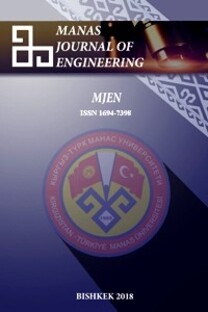Separation of chromium and nickel ions by supported liquid membranes using TOA as carrier
The extensive use of chromium in leather tanning, metallurgy, electroplating and other industries has resulted in the release of aqueous chromium to the subsurface at numerous sites. Cr (VI) has received considerable attention owing to its extensive industrial applications and has long been recognised as a toxic substance due to its strong oxidising potential and the ease with which it can cross the biological membranes. In recent years the application of various solvent extraction technologies to the removal and concentration of chromium have been widely studied; chemical precipitation, ion exchange, reverse osmosis, diffusion dialysis, adsorption, liquid membrane technique are some of the alternatives that have been reported in the literature. Recently supported liquid membrane (SLM) extraction is an alternative to conventional solvent extraction due to its advantages like high selectivity, operational simplicity, low solvent inventory, low energy consumption, zero effluent discharge and combination of extraction and stripping into one single unit. In this work the selective separation of chromium from acidic media, containing the mixtures of chromium and nickel by SLM was investigated using TOA (tri-octylamine) as carrier. The liquid membrane was consisted of the desired concentration of an extractant (TOA), a modifier (TBP), and a diluent (chloroform, kerosene, cyclohexane). The membrane support was microporous hydrophobic polypropylene Celgard 2500. Such parameters as, the solvent type, feed solution pH, extractant (TOA) concentration, modifier (TBP) concentration and temperature were experimentally studied and the optimum conditions were determined. The permeation coefficients (P) and the initial fluxes of chromium (Jo) were calculated. Separation factors of chromium over nickel was calculated from the experimental measurements.
___
- [1] Kongolo K., Mwena M.D., Banza A.N., Gock E., “Cobalt and Zinc Recovery from Copper Sulphate Solution by Solvent Extraction“, Miner. Eng. 16, (2003), 1371-1374.
- [2] Kumbasar R. A., Tutkun O., “Separation and Concentration of Gallium from Acidic Leach Solutions Containing Various Metal Ions by Emulsion Type of Liquid Membranes Using TOPO as Mobile Carrier“, Hydrometallurgy, 75 (1-4), (2004), 111-121.
- [3] Molinari R., Drioli E., Pantano G., “Stability and Effect of Diluents in Supported Liquid Membranes for Cr (III), Cr (VI) and Cd (II) Recovery“, Sep. Sci. Technol. 24 (12-13), (1989), 1015-1032.
- [4] El Aamrani F. Z., Kumar A., Beyer L., Cortina J. L., Sastre A. M., “Uphill Permeation Model of Gold (III) and Its Separation from Base Metals Using Thiourea Derivatives as Ionophores Across a Liquid Membrane“, Hydrometallurgy, 50, (1998), 315-324.
- [5] Sastre A.M., Kumar A., Shukla J. P., Singh R. K., “Uphill Permeation Model of Gold (III) and Its Separation From Base Metals Using Thiourea Derivatives as Ionophores Across a Liquid Membrane“, Sep. Purif. Methods, 27, (1998), 213-298.
- [6] Gaikwad A.G., “Synergetic Transport of Europium Through a Contained Supported Liquid Membrane Using Trioctylamine and Tributyl Phosphate as Carriers“, Talanta, 63, (2004), 917-926.
- [7] Campderros M. E., Marchese J., Hydrometalurgy, “Transport of Niobium (V) Through a TBP-Alamine 336 Supported Liquid Membrane from Chloride Solutions“, 61 (2001), 89-95.
- [8] Marcus A.S., Ion Exchange and Solvent Extraction of Metal Complexes, New York: Interscience, 1969.
- [9] Biswas S., Basu S., “Synergic Extraction of Uranium (VI) by Combination of Tri-iso-octylamine and Neutral Donors“, Radioanal. Nucl. Chem., 242 (1), (1998), 387-394
- [10] De Haas K.S., Brink P. A., Crowther P., “Solvent Extraction of Iron, Cobalt and Nickel from Thiocyanate Melts“, Inorg. Nucl. Chem. 33 (12), (1971), 4301-4309.
- [11] Venkateswaran, P., Palanivelu, K., “Recovery Of Lead (II) From Aqueous Solutions by Flat Sheet Supported Liquid Membrane: Batch Experimental Studies and Transport Modeling“, Hydrometallurgy, 78, (2005) 107-115.
- ISSN: 1694-7398
- Yayın Aralığı: Yılda 2 Sayı
- Başlangıç: 2001
- Yayıncı: KIRGIZİSTAN-TÜRKİYE MANAS ÜNİVERSİTESİ
Sayıdaki Diğer Makaleler
Iredia D. ERHUNMWUN, Monday J. OMOREGİE
Vuslat SARIKAYA, Osman TUTKUN, Kurmancan KAPAROVA
Tarih Eren BABÜR, Kemal Kaan TEKİNŞEN, Ümit GÜRBÜZ
Gizem Eker SANLI, Busra TANDOGAN
Solutions of the system of maximum difference equations
Hava Çavuşoğlu VATANSEVER, Ayşegül Ersoy MERİÇBOYU
Investigation of Fatty Acid Composition, Thermal and Rheological Behavior of Yak, Cow and Horse Fats
Jamila SMANALİEVA, Zhyldyzai OZBEKOVA, Asylbek KULMYRZAEV, Peter FİSCHER
